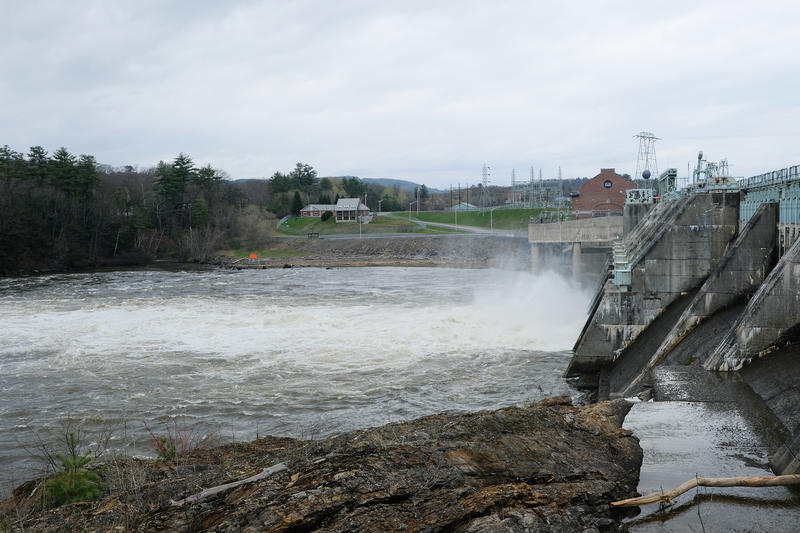For Residents On The Connecticut River, Hydro Dams’ Relicensing Is A Rare Opportunity
Right now, a group of hydroelectric dams on the Connecticut River are undergoing a once-in-a-generation process – a federal relicensing. NHPR’s Annie Ropeik went to the dams and talked with people who live, work and play nearby about what they hope might change.
Steve Stocking has farmed the banks of the Connecticut River in Fairlee, Vermont for 50 years. He took me to the edge of his cornfields in early May to see the river, and what he feels nearby dams have done to his land.
“The slope falls down, especially when it soaks with water from high levels, and then it runs out quickly … and it weakens the support, and it sloughs down,” Stocking says.
Down here, we can see where the water has carved away the muddy banks. Now, all rivers cause some erosion, but Stocking says the dams constantly raise and lower the water level more than is natural – and he thinks that’s cost him 85 feet of property since he came here.
“To sit here and watch land that you pay taxes on and could grow corn or crops on be sloughing off into the river,” Stocking says, then sighs. “I don’t know what to tell you, if we’d have bought it, but it was what we did.”
Stocking’s farm is 18 miles upriver from Wilder Dam, near Dartmouth College. This puts him well within Wilder’s 45-mile reservoir area.
Stocking and others want to have a say in how much water the dam pulls from that reservoir each day.
“We’ll have our chance now and there won’t be another chance for another 50 years,” says Kathy Urffer, who works for the Connecticut River Conservancy.
She says it’s a unique moment because Great River Hydro, which owns lots of dams on the Connecticut River, is seeking new federal licenses for Wilder Dam and two others. These permits are decades long, and Urffer says they spell out exactly how the dams will operate.

